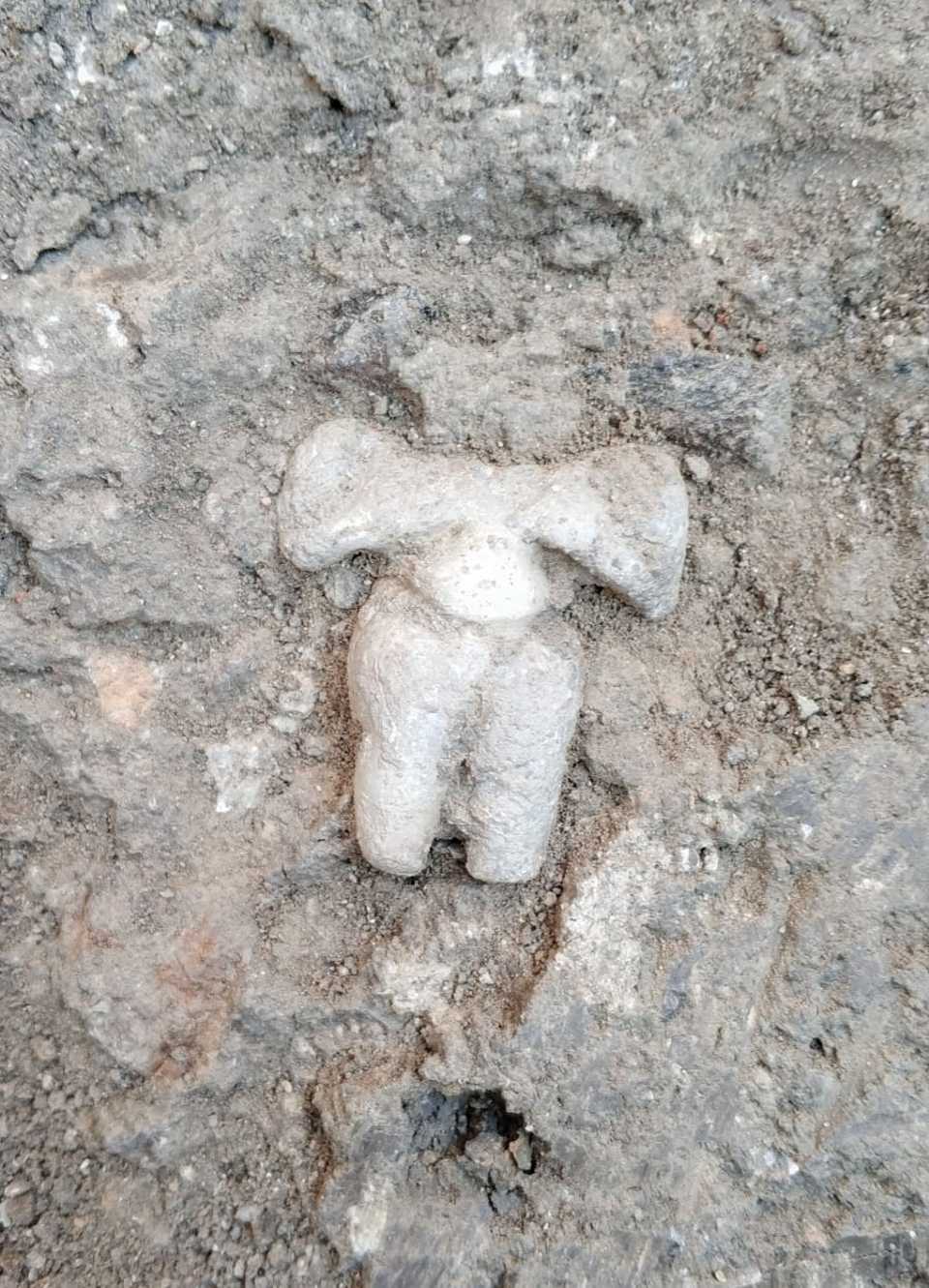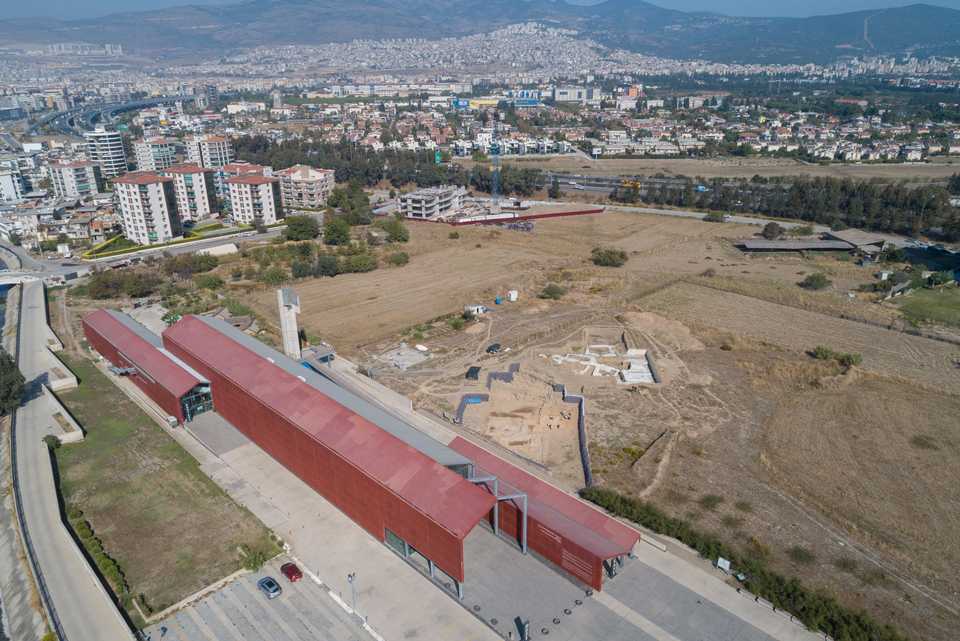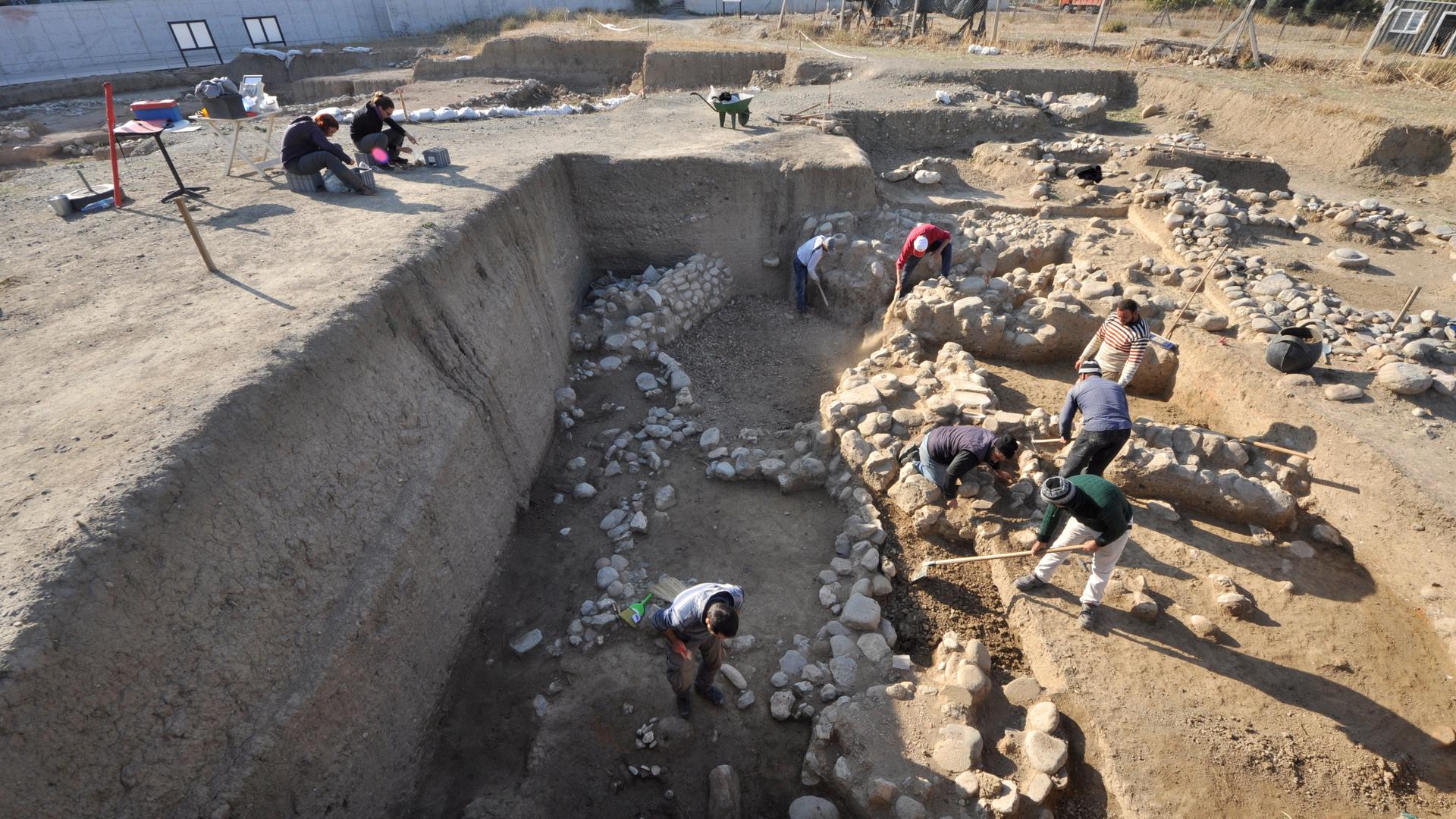The mound that is being excavated, has already revealed some critical traces of The Neolithic Age and much about the early settlers in the Izmir area off the Aegean coast, their surroundings and their culture. For example, they lived in separate houses, with separate roof systems, unlike Catalhoyuk in middle Anatolia, where the houses are next to each other.
“The history of Izmir was thought to go back 5,000 years,” associate professor Zafer Derin of Ege University says. “With the discovery of Yesilova and the excavation, this has been updated.”
The findings from the joint project between the Culture and Tourism Ministry of Turkey, Ege University and the local authorities, are significant because they suggest that the historical settlements in the Izmir area go back 8,500 years, to 6500 BCE.
Derin, who located the mound and has been the excavation leader since 2005, explains that “with excavations made every year, hundreds of artefacts are unearthed, of baked clay and bones. There is no use of metal yet.”
“They have very good production techniques. They process stones and baked clay. They have red pottery. Their stone devices, axes, are made from flintstone or obsidian.”
Derin points out that “these stone devices are not for war, they are for hunting primarily.”
The first settlers, according to Derin, were very intimate with the sea. He bases this on the finding of sea bream bones and a lot of mussel shells.
“We know that they’ve used fish nets because we’ve found the stones they used to weigh them down,” Derin adds.
“They believe in the mother goddess, for wealth and fertility. There are other animals in nature that are sacred to these first settlers,” he adds. “Such as a bull, bear, panther.”

“As for the marble mother goddess figurine found this year that is missing a head, it represents Aegean civilisation,” says Derin. He points out that in Catalhoyuk, figurines are made from baked clay or limestone. “Marble,’ he says, “is a harder stone to process. You can see it more in the Aegean region.”
According to Derin, the settlers were an organised society. “They have seals made from baked clay, most with sun motifs. This indicates they have an organisation, they have rulers, they have trade.”
“To sum it up,” Derin says, “these first settlers lived under sunny skies, were a peaceful society who deified women and certain animals, and liked eating seafood.”
The 250 pieces found this year at the site will be handed over to the Izmir Archaeology Museum. There is also a visitor centre at Yesilova open all year that allows access to the excavation site and its findings. “We shouldn’t call it free of charge,” Derin laughs.
“We ask visitors to bring one used battery as an entrance fee,” to contribute to recycling efforts in the area.











Discussion about this post